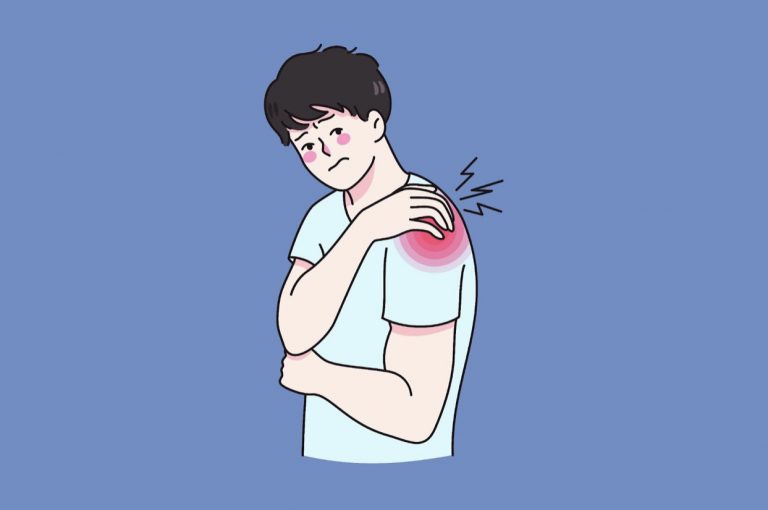Developing muscle strain is extremely common. In fact, everyone encounters this minor injury at some point or another in their lives. Whether you overdo a workout or do a new chore around the house, muscle strains basically occur due to overuse or overexertion.
Fortunately, the aches and pains associated with a mildly injured muscle usually go away in a short period of time with minimal treatment. However, in some cases, muscle strain symptoms persist for longer than they should. This could indicate that the muscle strain has progressed to a more serious injury, or it could be a sign of a completely different injury with similar symptoms.
For serious pain or any symptoms that last longer than a few days to a week, patients should always seek professional medical treatment. Working with a doctor is the best way to ensure that you receive a correct diagnosis and receive the right type and level of care for your specific injury.
If you’re experiencing pain and are trying to determine if it is related to a muscle strain or a more serious injury, take a moment to read the following guide to help you work with your doctor on a more informed basis.
How Does a Muscle Strain Develop?
Normally, our muscles function in individual muscle fibers working together in response to the nervous system to expand and contract. The muscle fibers are made out of protein and are built to withstand high amounts of stress and strenuous activity, but they have their limits. When excessive force or overly repetitive motion is applied to one part of the muscle, small microscopic tears develop resulting in muscle strain.
Like many injuries, muscle strains can be divided into categories according to severity. Muscle strain categories include:
- Grade One – This is the most mild and common form of muscle strain, resulting from minor tears to a small amount of tissue that causes limited pain and range of motion.
- Grade Two – Increased stress on the muscle fibers results in more significant symptoms, but does not cause a full rupture.
- Grade Three – A full tear or rupture to the muscle or tendon (the tissue that attaches the muscle to the bone. Sometimes requires surgery to reattach.
The terms strain and sprain are sometimes used interchangeably, but while the two injuries are similar, a strain occurs to muscle fibers and tendons. A sprain is a term for an overstretched or torn ligament, which is the flexible cartilaginous tissue that connects two bones together.
Which Injuries and Conditions Have Similar Symptoms to A Muscle Strain
Degenerative conditions like arthritis and spine injuries can sometimes be mistaken for muscle strains. Common locations for strained muscles include the neck, lower back, and hamstrings, which are also symptomatic areas for spine problems like arthritis, bulging discs, and herniated discs.
Additionally, conditions like arthritis and bursitis can occur throughout the body, particularly around joints such as the hips and knees, which are also frequent muscle strain locations.
In the case of spine conditions, displaced spine anatomy can result in nerve compression that causes pain to radiate into the neck, lower back, or even the legs, depending on the location in the spine.
In addition to aches and pains, these conditions can cause neuropathic symptoms such as tingling and numbness. This can often be an indicator that the symptoms are not being caused by muscle strain.
How Doctors Perform a Diagnosis
To determine the underlying cause of pain and other symptoms that have become persistent, a physician will perform an evaluation that generally consists of the following steps:
- Review of medical history
- Questions about specific symptoms and current activity level
- A physical examination, including palpation and range of motion tests
- Diagnostic testing, such as an x-ray or MRI
The type and degree of medical treatment recommended upon diagnosis will depend on the specific condition and severity. In the case of an injured muscle, conservative treatments will be recommended first in all but the most severe cases. This is also true of spine conditions and degenerative conditions like arthritis.
Treatment Options For Muscle Strains And Other Conditions
If the diagnosis is a grade two or higher muscle strain, doctors will recommend a course of rest and conservative treatments. Since muscle strains are related to overuse, it’s important to make sure you have not overexerted muscle fibers.
Athletes or the very active are typically advised to take time off from their chosen pursuit. People with physical jobs are recommended to seek light duty if ordered by a doctor.
In addition to rest, effective treatments include physical therapy, hot/cold compression, elevation, and over-the-counter medications are effective treatments to manage symptoms and improve function while the injured muscles heal.
For conditions such as arthritis and degenerative disc conditions, doctors will often advise similar medical treatment. A key difference is that age-related conditions are generally non-reversible. However, by committing to conservative care and a healthy lifestyle, many patients are able to successfully manage symptoms on a long-term basis.
Doctors will not typically pursue surgery for muscle injuries unless there is a severe tear or rupture that will not heal without surgical reattachment. For degenerative conditions, surgery is also seen as a last resort and is often recommended in cases where there is severe nerve compression or joint damage that is causing debilitating symptoms and negatively affecting your quality of life.
BEST Health System Can Help!
Whether you have been diagnosed with a muscle strain, herniated disc, or arthritis the caring and experienced team at BEST Health System can help at any stage of the treatment journey. From physical therapy to minimally invasive surgery, we provide individualized and effective medical treatment that matches your lifestyle and care goals.
